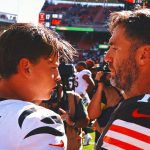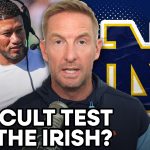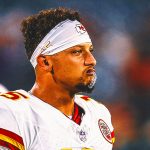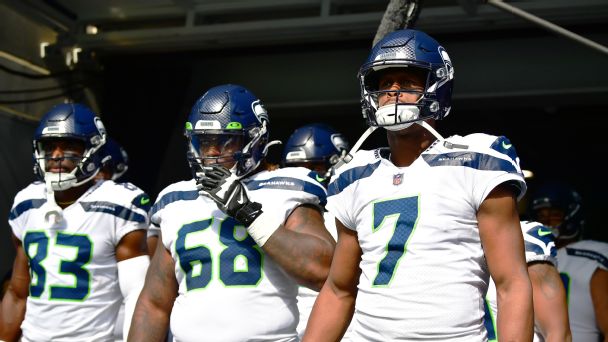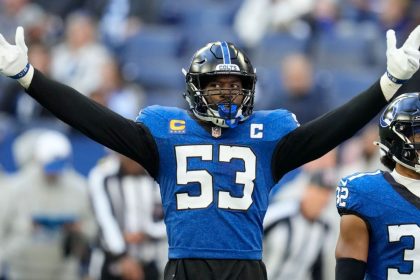
With the ink still drying on Geno Smith’s new three-year deal with the Seattle Seahawks, the organization has another occasion worthy of a toast: the first anniversary of the Russell Wilson trade.
It was 365 days ago on Wednesday when ESPN’s Adam Schefter broke the news that Seattle had agreed to send Wilson to the Denver Broncos in one of the biggest blockbusters in NFL history. The move paved the way for Smith’s remarkable career turnaround and drastically altered the Seahawks’ trajectory.
One year later, it sets up John Schneider, Pete Carroll and Co. for a massive offseason, the kind that could allow them close the gap in the NFC West with the rival San Francisco 49ers and take Seattle from a 9-8 team that got bounced in the wild-card round to one capable of making a deep run in the playoffs.
The huge return package for Wilson began paying dividends in 2022. Left tackle Charles Cross and outside linebacker Boye Mafe, chosen with the 2022 first- and second-round picks the Seahawks got from Denver, were part of the NFL’s best draft class. Tight end Noah Fant and defensive lineman Shelby Harris, two of the three veteran players the Broncos sent to Seattle along with quarterback Drew Lock, were solid starters.
But the trade has a chance to pay off even more in 2023. Thanks to the disastrous season that was for Wilson and the Broncos, the first- and second-rounders they owe the Seahawks in this coming draft — Nos. 5 and 38 — are both better than the ones they gave Seattle last year. Wilson’s contract is now completely off the Seahawks’ books after they carried his $26 million dead-money charge in 2022. And unlike last offseason, they know who their quarterback will be in 2023 and beyond.
Smith’s deal follows the earlier re-signings of kicker Jason Myers, special-teamer Nick Bellore and right guard Phil Haynes. Those moves have given the Seahawks a head start on what has the chance to be another franchise-altering offseason.
Here’s what else you need to know about what lies ahead over the next few months:
Remaining free agents
Lock and defensive tackle Poona Ford headline the list of Seattle’s 19 players who are scheduled to become unrestricted free agents. The Seahawks want to re-sign Lock to remain Smith’s backup, but he may have a strong enough market to price himself out of Seattle’s budget.
Ford has been a good story and a good player for Seattle, going from undrafted in 2018 to a productive starter who earned a two-year, $12.35 million contract in 2020 as a restricted free agent. He wasn’t as impactful in 2022, but he was forced to play out of position, often lining up at three-technique and D-end even though he’s best suited to play nose tackle.
At 27, Ford is young enough and has a strong enough resume to conceivably command $10 million or more per year on the open market. Losing him would be a big blow to a D-line that is already lacking adequate firepower, but Seattle may not be able to compete with deeper-pocketed teams if his price gets that high.
Running back Rashaad Penny is headed back to the market after another injury-shortened season. The Seahawks need a backup for Kenneth Walker III and Penny could be worth a flier on another one-year deal, but only if it’s for significantly less guaranteed than the $5.07 million he got on his last deal. Third-down back Travis Homer is also set to be an unrestricted free agent.
Seattle’s other pending UFAs: WR Marquise Goodwin, WR Laquon Treadwell, C Kyle Fuller, OLB Bruce Irvin, OLB Darryl Johnson, DE L.J. Collier, ILB Cody Barton, ILB Cullen Gillaspia, CB Artie Burns, CB Justin Coleman, S Johnathan Abram, S Teez Tabor, S Josh Jones, LS Tyler Ott, LS Carson Tinker.
Safety Ryan Neal, who stepped in for Jamal Adams again last season and was one of Seattle’s best defenders, is a restricted free agent. He’ll be back one way or another, whether it’s on an RFA tender or a multi-year deal. The second-round tender would cost $4.3 million.
Seattle’s other RFAs are LB Tanner Muse and WR Penny Hart.
Biggest need
The Seahawks have a potential overhaul on their hands with their front seven, where several spots were filled last season by players who are either aging (DT Al Woods, Irvin — both 35), coming off major injuries (ILB Jordyn Brooks and DT Bryan Mone, both recovering from torn ACLs), ineffective (Collier) or unsigned (Ford, Barton, Johnson).
“I think we’ve got to get a lot better,” Schneider said at the combine. “Yeah, we need to be better up front. I think that was pretty evident. We were on the field a lot. We didn’t defend the run real well. We had some games in there [when] we did a really nice job. And we had several games that didn’t go so well. We know what the issues are and we’re ready to attack them and fix them.”
Center is Seattle’s next-biggest need after Austin Blythe retired. A third receiver is another.
Cap situation
The Seahawks had around $24 million in cap space before Smith’s deal, which will likely reduce that number by roughly half. Cutting guard Gabe Jackson, which seems like a foregone conclusion, would free up $6.5 million.
Harris has a $12.2 million cap charge in the final year of his deal and turns 32 in August, which has led to speculation that he could be cap casualty. Moving on would free up $8.94 million, though he played well enough to justify keeping in the fold. Harris has a $2 million roster bonus due March 19, so any decision will likely be made by then.
“He did a great job,” Schneider said of Harris at the combine. “He was really quick off the ball. He was active. He gets on people’s edges, gets up and down the line of scrimmage, was one of our better pass-rushers … He’s got one more year left.”
Over The Cap estimates that the Seahawks will need to set aside around $10 million to sign their draft class. That’s on top of in-season expenses like the practice squad and injury replacements. Making big splashes in free agency isn’t the Seahawks’ MO, but they’ll likely have to make more than one cap-cutting move in order to have any real spending power.
Draft capital
Never in team history have the Seahawks had two first-rounders and two second-rounders in the same draft. The highest they’ve picked under Carroll and Schneider was No. 6 overall in 2010 (LT Russell Okung), the year they arrived in Seattle. The only other top-10 pick they’ve made in that span was Cross at No. 9 last year.
“This is really an exciting opportunity for us,” Carroll said at the combine. “We have not been in this situation. We have not felt like this ever.”
The Seahawks have four picks in the top 53 and 10 in all. In addition to the first- and second-rounders from Denver, they have their own picks in those rounds, which are Nos. 20 and 53. They have an extra fifth from the Steelers via the 2021 Ahkello Witherspoon trade and have one pick apiece in the third, fourth, sixth and seventh rounds.


